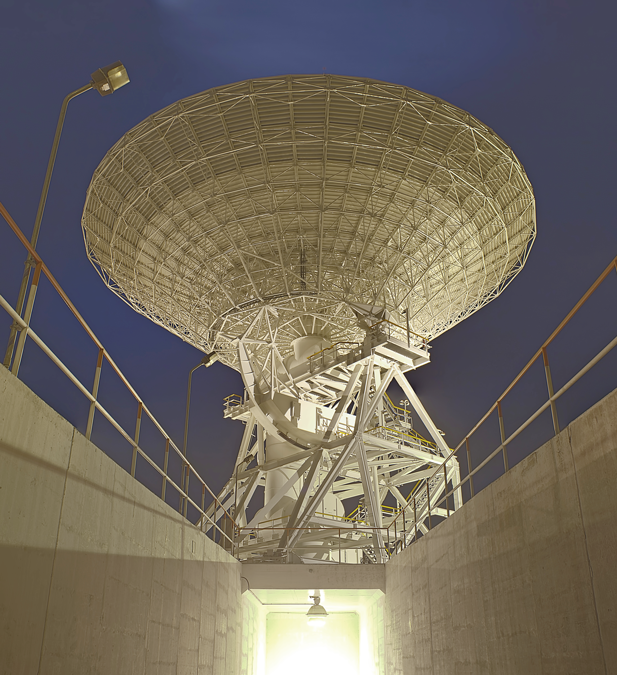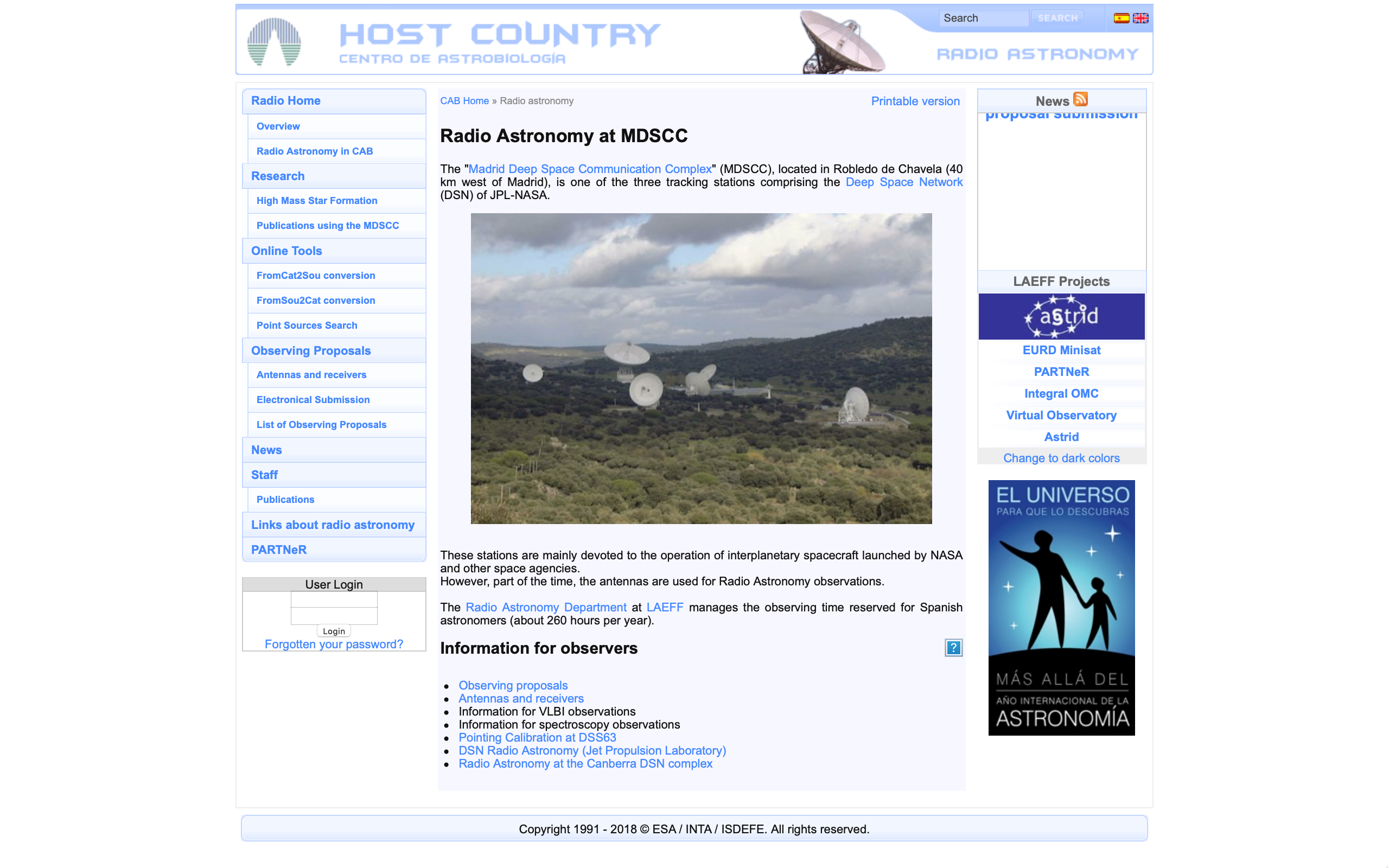We have created a whole set of online tools for the new webpage of the radioastronomy observations programme at NASA’s MDSCC (Madrid Deep Space Communications Complex).
About MDSCC
MDSCC is one of the three ground stations that constitute to NASA’s Deep Space Network (DSN), which is in charge of the communication with NASA’s spacecraft in space. Each station is 120 degrees apart on Earth so that at any time, any satellite in deep space is able to communicate with at least one ground station. The stations are operated 24 hours a day, seven days a week, 365 days per year, so no information is ever lost. To communicate with satellites the stations rely on several antennas, some of them, like DSS-63, with up to 70 meters in diameter. Of course, MDSCC’s main role is to contribute to NASA’s DSN, but a secondary field of activity in the complex is the research in radioastronomy, as each antenna can also be used as a radiotelescope, able to capture and record the energy radiated by many objects in space.
MDSCC was built in 1964, its first antenna started working the following year and the complex has been growing ever since. Some legendary missions such as the Voyagers communicated with MDSCC. Even if its owned by NASA, the complex was first operated by INTA, then by INSA, and since 2012 is being operated by Isdefe. However, the center being operated by Spanish companies is not the only benefit resulting from the agreement between the USA and Spain to host MDSCC in Robledo de Chavela. Namely, the Host Country Program managed by the CAB (Astrobiology Centre) associated to the NASA Astrobiology Institute offers to Spanish astronomers the opportunity to observe with MDSCC’s antennas during 3% of the total available time. Despite not having much observation time, important discoveries have been made by Spanish physicists with these antennas. Maby the most known and important one is the first ever detection of a water maser emission from a planetary nebula.
Miranda et al. (2001) discovered the first planetary nebula with water maser emission. This kind of emission was previously though to be impossible to happen in planetary nebulas due to rapid destruction of water molecules. [#1]
This was done using spectroscopy observations data from the 70m antenna DSS-63. Actually, mainly K-band and Q-band spectroscopy observations are performed for this project although K, Q, X, S, and L -bands spectroscopy and continuum observations are possible with the DSS-63, DSS-54 and DSS-55 antennas, which are the three antennas currently being used in the Host Country Program.
About the online tools
As stated before, our job in this huge project has been the creation of a whole set of online tools for the new webpage of the host country programme. The tools implemented on the website include some software to aid astronomers in observation planning and calibration processes and additional tools to convert observation’s data from one format to another:
FromCat2Sou conversion: A user friendly tool to transform .cat catalogues into .sou format files.
FromSou2Cat conversion: A similar online tool to transform .sou format files into .cat catalogues.
Point Sources Search: This software is meant to help astronomers while they look for calibration sources to prepare the antenna for an observation. The programme looks for calibration sources in the NRAO LIST (1860 Sources and 5523 entries). Users may explore the database by introducing specific names or coordinates in the search tab or by setting the minimun desired flux at the choosen observation bands. The search output may be directly visualized or may be written on an ASCII file, which can be opened with XEphem, exp_control, or GILDAS/ASTRO.
Pointing Calibration: Typical pointing errors during a single-dish observing session at 1.3 cm with the DSS63 antenna are lower than 10″. But to achieve this accurancy, pointing checks using a calibrator with estimated flux density higher than 1 Jy should be performed at least every two hours. The pointing calibration tab (complemented by the point sources search one) displays the “VLA calibrator manual” to aid astronomers trough this process.
Cover Image © Yeray López Portillo
WebPage Image © NubaloStudios – SpaceRobotics
#1: Interestellar Spectroscopy at the Madrid DSN Station © Itziar de Gregorio Monsalvo, Olga Suárez, José F. Gómez & Tom Kuiper

